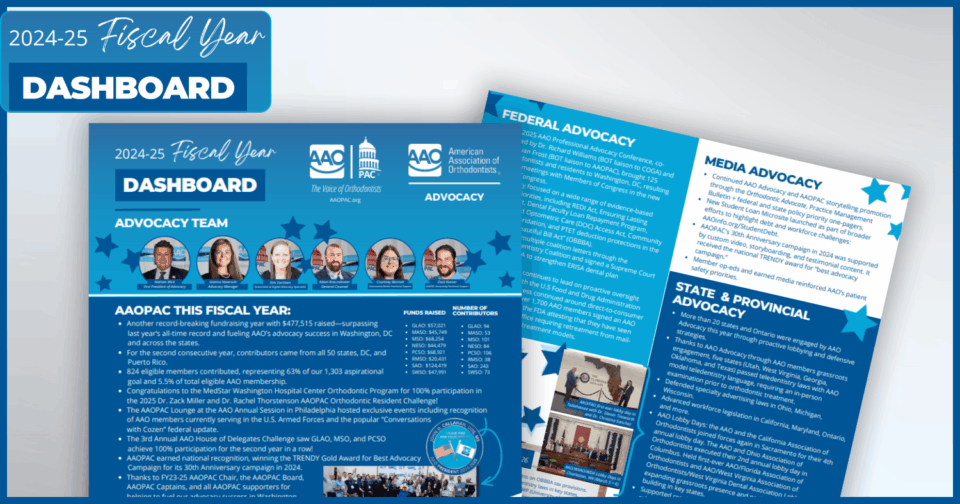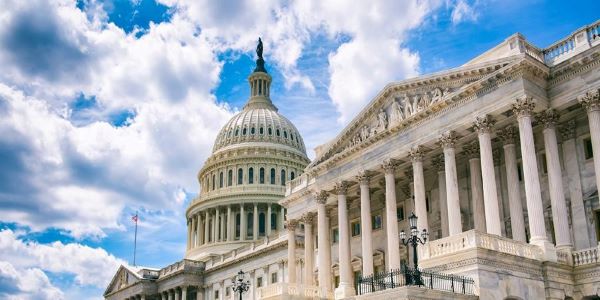We are pleased to share an important update out of the State of New Mexico, thanks to the quick work of AAO staff and members.
Earlier this year, a New Mexico State Senator introduced Senate Bill 241, which would have greatly expanded the definition of teledentistry. Under the proposed “teledentistry” language, a patient could begin and undergo dental and orthodontic treatment without ever seeing an orthodontist or dentist in-person.
In an effort to protect patient health and safety, the AAO and the New Mexico Association of Orthodontists (NMAO) worked to stop Senate Bill 241 from becoming law. Following the bill’s passage in the New Mexico State Senate, New Mexico members, Dr. Ross Mohr (NMAO President) and Dr. Greg Jorgensen, reached out to New Mexico legislators to offer amendment language that would better protect the health and safety of New Mexico patients. Unfortunately, on the final day of New Mexico’s legislative session, both chambers met for a consecutive 24-hours, and the New Mexico House passed the legislation as-is, sending it to the Governor’s desk. Thereafter, both the NMAO and AAO sent letters to the Governor, expressing their concerns.
On March 19th, the AAO’s Vice President of Advocacy and General Counsel, Sean Murphy, Dr. Ross Mohr, Dr. John Cornali (NMAO Treasurer), and the AAO’s New Mexico lobbyist met with Governor Lujan Grisham to discuss the bill and the potential problems it could cause.
On April 5th, 2019, Governor Lujan Grisham vetoed SB 241, stating:
“While I applaud the Legislature’s effort to improve access to dentistry in rural areas of New Mexico, SB 241 simply does not strike the right balance between access to dental care and patient safety. SB 241 greatly expands the definition of “teledentistry” to allow dental treatment when the patient and the dentist are not in the same physical location. Unfortunately, SB 241 does not make any corresponding changes to ensure that the practice of teledentistry meets the standard of care that applies to all other dentistry in New Mexico, such as requiring face-to-face follow up visits and ensuring adequate oversight for out-of-state dental practitioners who wish to practice teledentistry in New Mexico.”
The AAO’s work in New Mexico was made possible through the Component Legal Support Fund (CLSF), which was established by a vote of the 2015 House of Delegates and provides grants to assist with legal and legislative issues that impact component groups. To date, the CLSF has assisted or is assisting over 25 state components and two Canadian components with legal and advocacy issues.
The AAO would like to thank the New Mexico Association of Orthodontists, the New Mexico Dental Association, AAO advocacy and legal staff and those New Mexico members who reached out to their legislators regarding SB 241, for their tremendous advocacy and quick attention to this pressing matter.
Please note, every orthodontist (as a citizen of and licensed dental provider in his or her state) and orthodontic patient has the right, independently and individually, to express his or her opinion on any dental issue to his or her dental board, regulatory bodies like the Food and Drug Administration (FDA), and elected officials (e.g. Attorney General, Governor, state representative, etc.). If you feel so compelled, you can look up and contact the appropriate entity.
Contact information for state and provincial dental regulatory authorities can be found at https://www.aaoinfo.org/aao/state-dental-board-info.



